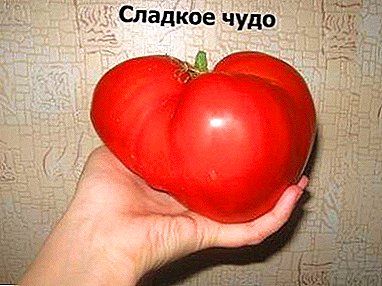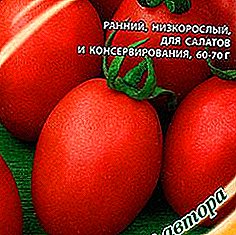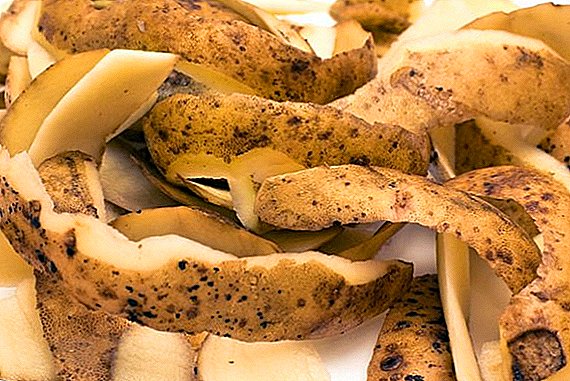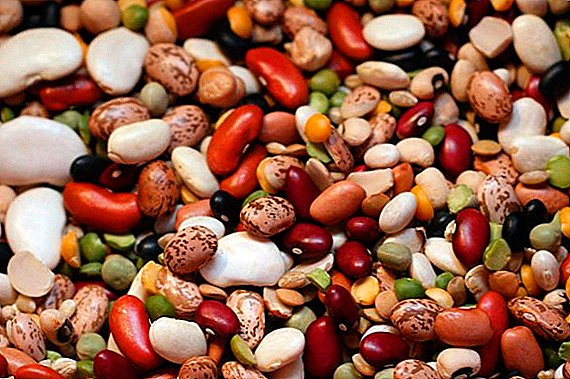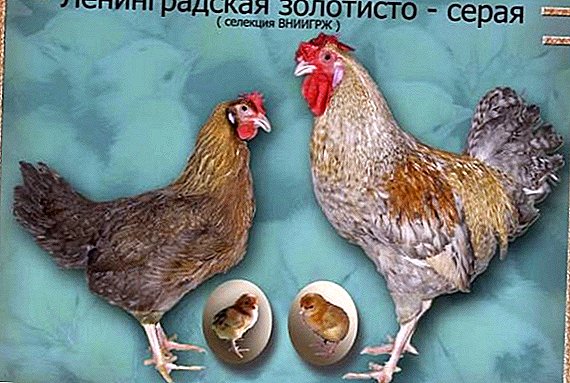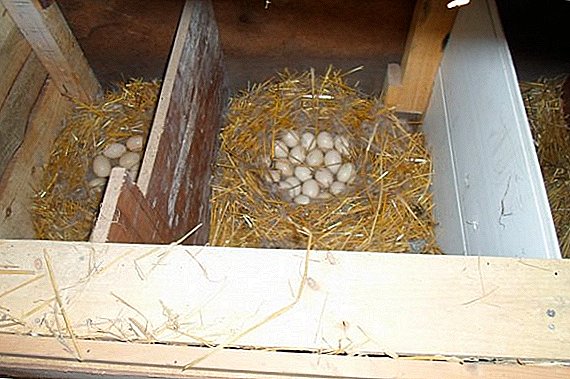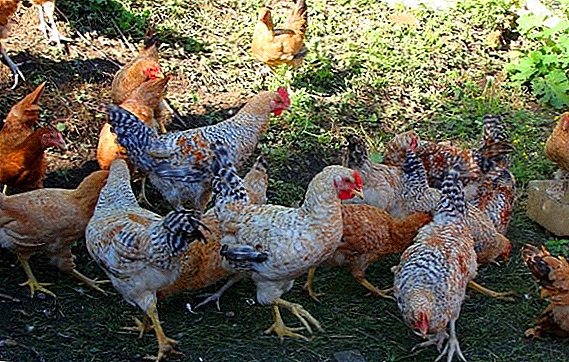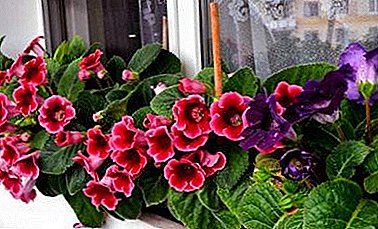
Gloxinia (sinningia) is a perennial indoor half-shrub plant of a high degree of decorativeness. The plant can reach a height of up to 30 centimeters. The stems are short, the leaves are wide, round pubescent, the flowers are large velvet in the form of a bell.
Despite its magnificence, Gloxinia is very unpretentious and easy to clean. But for such a beauty to please the household with its blooming for a long time, it is necessary to know the subtleties of its proper watering and timely feeding.
Irrigation methods
There are two possible options for watering gloxinia:
- watering from the top - you need to pour water on the ground with a gentle stream;
- watering in the pan - water is poured into the pan of a pot with a flower, this method allows the earthman to evenly drink water.
Important! Water from the pallet will need to be drained after 20-30 minutes so that the soil does not overflow.
Gloxinia must be watered evenly. To do this, you can use a bottle with holes in the lid. Well suited sports bottle dispenser. If watering is done from the top, then you need to ensure that the water is well soaked only the entire soil, and the water should not fall on the leaves and center of the tuber.
It is also important to ensure that there are no gaps between the soil and the walls of the pot. If there are these gaps, the irrigation water will get there in a large flow, it will not have time to be absorbed into the earthen room, but will flood the root system of the plant and stagnate in the pan.
In the process of watering the whole earthen room should be moderately and equally wet, the pot with the plant at the same time should be much harder.
How to choose the right pot for gloxinia, as well as about the features of planting and watering the plant, read here, and from this article you will learn how to properly prepare the soil for the "tropikanka".
How to properly water at home?
To watering Gloxinia does not harm the plant, it is necessary to follow a number of rules.
Water
 Water, which can be watered gloxinia, should be soft. The flower will feel good if it is watered with thawed, rain, filtered or boiled water.
Water, which can be watered gloxinia, should be soft. The flower will feel good if it is watered with thawed, rain, filtered or boiled water.
If there is no opportunity or time to get soft water, you can use tap water. But such water is suitable for use only after settling for 24 hours.
Water for watering the plant must necessarily be at room temperature or warmer. Watering too cold water will lead to the imminent death of the plant.
How often?
Watering this plant does not work on a clearly defined schedule or schedule. Watering gloxinia is carried out exclusively when the plant needs watering. This moment comes at the moment when the top layer of soil around the flower looks dry.
Adverse effects
If the flower will not be watered according to the rules, then you can face a number of adverse consequences for the further growth and development of the plant:
- slow drying of soil and plants;
- Gulf root system;
- tuber rot;
- poor detection of buds;
- stunting;
- total death of the flower.
- Why do blacken buds of gloxinia wither, rot and do not open?
- Gloxinia diseases with photos and methods for their treatment.
- Why does gloxinia not bloom and how to make it release buds?
- What are gloxinia leaf diseases and how are they treated?
What is top dressing?
Top dressing is the application of fertilizers during the growing season. This is an agrotechnical device, it is aimed at improving the nutrition and development of the plant. Top dressing happens two types:
- Root - fertilization directly into the soil, in this case, all nutrients are assimilated by the root system.
- Foliar - fertilization by spraying the ground part of the plant with various solutions of substances used to nourish the plant, in this case, useful elements penetrate through the stems and leaves.
Fertilizer types
You can feed gloxinia with the help of popular and purchased products.
Folk remedies
The most famous of these folk remedies for feeding indoor plants:
Banana infusion
 From the peel of a banana is prepared infusion:
From the peel of a banana is prepared infusion:
- Fresh skin should be finely chopped and pour a glass of boiling water.
- Insist in a warm dark place for 24 hours.
- Water gloxinia infusion 1 time per week.
Onion Husk Broth
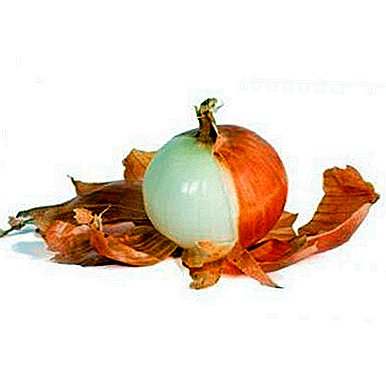 A good handful of onion peel should be washed and filled with 1 liter of water.
A good handful of onion peel should be washed and filled with 1 liter of water.- Boil this mixture for 15 minutes.
- Allow the broth to cool for about 3-4 hours.
- Water gloxinia with diluted soft water in a ratio of 1: 3.
Aquarium water
 For feeding houseplants aquarium water is very effective. It contains many essential substances for plants.
For feeding houseplants aquarium water is very effective. It contains many essential substances for plants.
Water gloxinia aquarium water can be no more than 1 time per month. Frequent watering can lead to grounding and souring the soil around the flower.
Eggshell
 In the form of fertilizer used infusion. To make it you need:
In the form of fertilizer used infusion. To make it you need:
- 4-5 eggshells pour a liter of warm boiled water.
- Infusion is prepared within 7 days.
- After this period, the infusion for watering the plant should be diluted with water in a ratio of 1:10.
On a note. This feeding can be carried out 1 time per month.
Ash
To prepare the fertilizer will need:
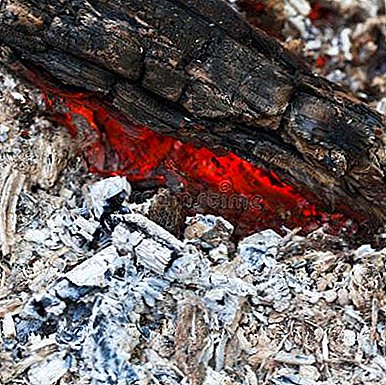 1 tablespoon of birch, deciduous, coniferous or grassy ash.
1 tablespoon of birch, deciduous, coniferous or grassy ash.- Ash should be filled with 1 liter of water.
- Infuse for 10 days, stirring the mixture periodically.
- Water gloxinia infusion can be 2 times a month.
This fertilizer also acts as a good natural antiseptic.
Funds for sale
The following plant fertilizers are most popular.
Fertika Lux
 Complex, mineral, crystalline, completely water soluble fertilizer. Contains a lot of phosphorus and trace elements.
Complex, mineral, crystalline, completely water soluble fertilizer. Contains a lot of phosphorus and trace elements.
For top dressing of indoor plants, a solution is prepared from 1 tablespoon of the product per 10 liters of water. Top dressing is carried out in the summer at each watering, and in the winter each third watering. The price is about 100 rubles per 100 grams.
Kemira Lux
 Potash phosphate fertilizer. The composition also has a considerable dose of nitrogen. The tool is produced in the form of crystals, which are completely dissolved in water.
Potash phosphate fertilizer. The composition also has a considerable dose of nitrogen. The tool is produced in the form of crystals, which are completely dissolved in water.
For feeding plants need to prepare a solution of 1 tablespoon of the drug diluted in 10 liters of water. To add flowers, in a warm season, fertilizer is possible at each wateringand a cold period with every third or fourth watering.
The average price per 100 grams is 70-90 rubles.
Uniflor growth
 Full nitrogen fertilizer for intensive plant growth of green mass.
Full nitrogen fertilizer for intensive plant growth of green mass.
Dilute the drug should be 10-15 grams per 1 liter of water. Watering indoor flowers can be no more than 1 time in 15 days.
The price is 80-100 rubles.
Uniflor flower
 Full-fledged potassium phosphate fertilizer for decorative indoor plants. Used during budding and flowering. It is also applicable in the winter to reduce the stress of indoor plants (the features of the wintering of Gloxinia can be found here).
Full-fledged potassium phosphate fertilizer for decorative indoor plants. Used during budding and flowering. It is also applicable in the winter to reduce the stress of indoor plants (the features of the wintering of Gloxinia can be found here).
For 1 liter of water you need 15 grams of the drug. You can water gloxinia 2 times a month. The average price for fertilizer is 100-120 rubles.
How to feed the plant at home?
All of the above means for feeding will help your gloxinia get the missing nutrients and trace elements. If you ask yourself how to feed Gloxinia, the answer is as simple as possible, only by watering, since spraying will have a detrimental effect on the plant. This flower does not tolerate the ingress of any moisture on its leaves and stems.
How many times do you need to fertilize?
Important! Plant nutrition is needed during the growing season and a month after transplantation.
How to transplant gloxinia and properly care for it, read here.
How many times it is necessary to feed the flower depends on the type of the selected nutrient substance. If folk remedies are used as fertilizers, then it is necessary to take into account the recommendations on the frequency of their use. If gloxinia is fertilized with commercial preparations, then each factory package has a schedule and norms for the application of such fertilizers.
Consequences of improper care
If you overfeed the plant with fertilizers, it can lead to:
- the formation of shortened peduncles;
- premature leaf aging;
- plant chlorosis;
- root rot;
- lack of education flower shelves.
If the plant does not feed in a timely manner, it will also suffer. In this case:
- plant growth slows down;
- leaves grow small and not healthy looking;
- flowers become smaller;
- the number of buds decreases;
- flower color changes;
- lower leaves turn yellow;
- stems become thin and not fleshy.
On the features of proper care for gloxinia, read in our material, and here we talked about how not to destroy the flower when grown at home.
Conclusion
Each plant for its active growth and development requires an individual approach to care. If you have gloxinia in your house, then it is necessary to study the peculiarities of its watering and feeding, since lack of attention or ignorance of the peculiarities of this plant leads to its quick death.


 A good handful of onion peel should be washed and filled with 1 liter of water.
A good handful of onion peel should be washed and filled with 1 liter of water. 1 tablespoon of birch, deciduous, coniferous or grassy ash.
1 tablespoon of birch, deciduous, coniferous or grassy ash.